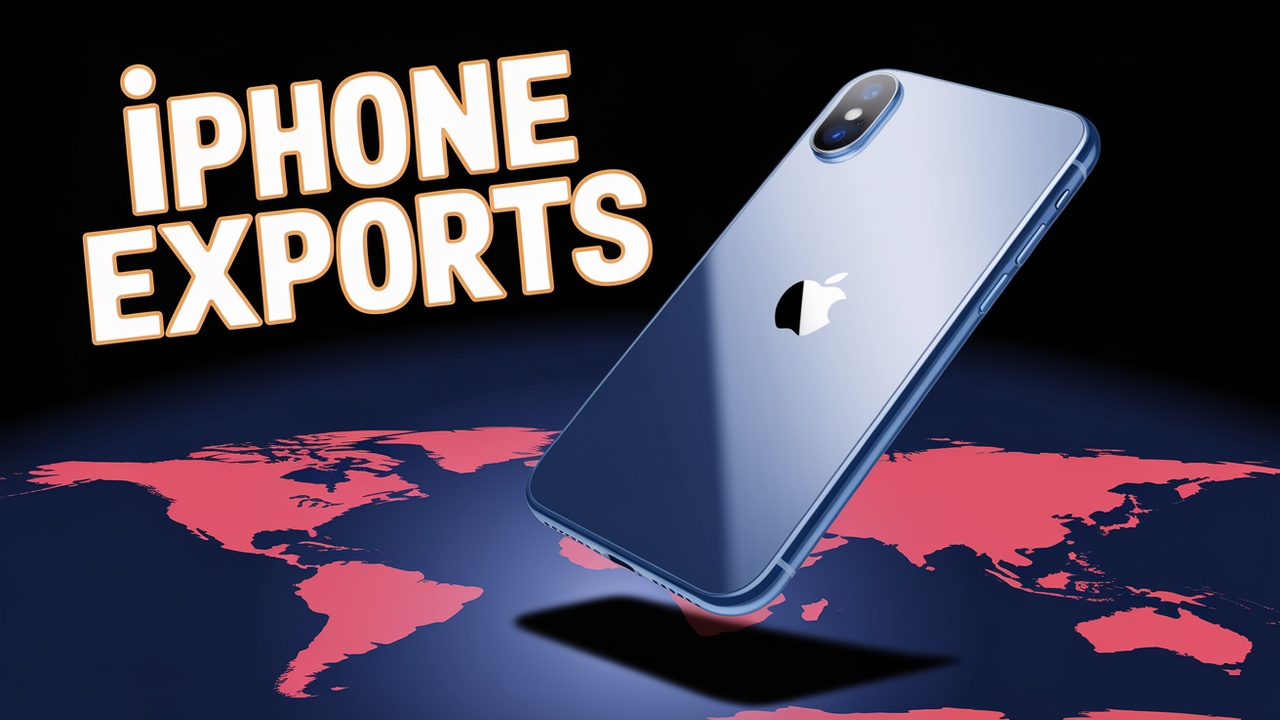Apple Exports 97.6% of iPhones to US from India Amid Tariffs
DELHI — Apple exported 97.6 % of its iPhones to the United States from India in March 2025, an increase of 81.9 % from the previous calendar month. Duty on Chinese goods.

The technical school giant flies 600 tons of iPhones, measuring 1.5 million units of measurement, to avoid trade impediments. This transition highlights India’s increasing role as Apple’s manufacturing center as it moves through global trade conflicts.
Apple’s Strategic Shift to India
Apple exported iPhones from India to the U.S. In March, the number of measurement units reached 4.43 million, an increase of 219 percent over February’s 1.71 million, according to the S&P planet trade acumen. The company borrows six cargo planes from Chennai, transporting a total of 100 tons, to beat the 10% US rate. April 5th: duty ready. Apple cut customs clearance times at Chennai airport from 30 days to 6 days, ensuring fleet delivery.
The move goes against the United States. The duty, which hit Chinese imports by a 125 percent rate of judge, compared to the 26 percent rate of Hindustan, hesitated for 90 days. ” Apple wanted to avoid the tax,” a source familiar with the scheme told Reuters. In March, Foxconn, Apple’s main supplier in India, exported 1.31 million iPhones, while Tata Electronics shipped 612 million. This stock objective is to maintain the United States. The iPhone 16 Pro Max’s monetary value is stable, as a 125 percent Chinese duty could increase the iPhone 16 Pro Max’s monetary value from $ 1599 to $ 2300.
Why India? Tariff Advantage
Apple gets an edge on costs thanks to a low-cost judge in India. The territory promptly reported, in particular for the Republic of India’s $ 9 million export of Smartphones to the United States. Apple to increase production by 20% near one Indian plant, add workers and extend Foxconn’s Chennai factory operation on Sundays. The factory is producing 20 million iPhones per year, including the iPhone 15 and 16. The two fresh plants of Foxconn and Tata are subordinated to the construction, signifying a long-term commitment.
China, Apple’s main manufacturing center, is facing significant trade obstacles. The United States of America: 12 percent. The tax could double iPhone costs if the tax is levied entirely. Bharat’s 26 % duty, even if it is reinstated, would be very low, making it a viable substitute. Apple’s export to alternative markets, notably Japan and the Czech Republic, dropped sharply in March, along with the shipment of goods to the United States. The current focus on iPhones sold in the United States underlines Apple’s need to secure a large market where it will sell 75 million iPhones in 2024.
Challenges and Opportunities
Expanding production at Bharat International Relations and Security Network thymine free of obstacles. Apple relies on Chinese components which accounted for 71.3 % of India’s second import in 2025. Expansion may be hampered by strike and infrastructure insufficiency. S&P note that a major stake and cooperation with producers such as Tata, Pegatron, and Foxconn, approved by Bharat’s production-linked incentives scheme, will be needed to shift the United States to India by 2026.
There’s still a lot of chances, though. Export boom in India, reaching $ 2,000,000,000,000,000,000 in March iPhones, strengthening their worldwide supply chain. The possibility of a US-India trade deal in Q3 2025 could add to Apple’s plans. The 185,000 managers employed by the firm in India, 70% of whom are females, highlight the economic impact. The Republic of India could manufacture over 26% of the world’s iPhones, up from the current 15%, doubling the production.
Global Trade and Consumer Impact
Apple’s export tactics reflect a broad trade shift. Other companies may follow, separating from China to avoid duty, aiming at “regionalization free from localization,” as S&P puts it. However, the tariff exemption for mobile phones, announced for May, presents a temporary measure. Apple’s U.S. Warehouses and stocks for a calendar month delay the increase in prices, but the longer-term cost depends on trade procedures. As Wedbush Securities points out, the iPhone from the United States costs $ 2,500.
Consumers are confronted with uncertainty. While Apple seeks to protect monetary values, a prolonged duty may stimulate growth, determining demand. In April, the stock of the firm dropped 15 percent, wiping $500 million off its market value. Apple’s negotiations with Foxconn and Tata on starting every US. By 2026, iPhones from India will mark a major turning point, possibly reshaping Earth’s engineering schools.
Looking Ahead
Exports of iPhones to the U.S. by Apple: 97.6%. From a Bharat tag, a turn tip. In order to maintain their credibility, businesses must be able to withstand the challenges of timing and trade doubts. The key will remain to extend India’s second production capacity and the trade agreement on procurement. For consumers, a dive into Apple’s trade-in projects, otherwise buy before promises, could save money. In order to avoid a shift in costs, companies should monitor the evolution of duties.
India’s rising status as a center of technical schools teaches lessons to other states. Apple’s success depends on one’s talent for the symmetries of cost, size, and novelty. If duty prevails, the Republic of India may become Apple’s main iPhone base, diminishing China’s laterality. Apple’s agility in a changing business environment will be tested in the next annual report, together with findings for technical schools and consumers around the world.